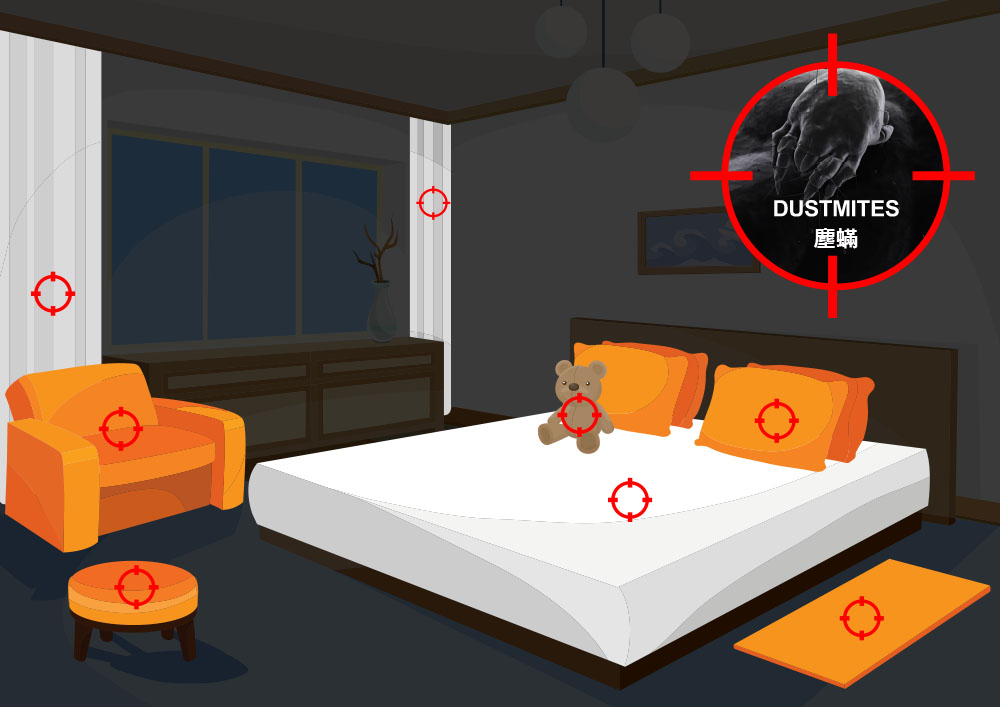How to reduce house dust mite allergens
In order to reduce house dust mite allergens in the environment, we need to reduce the growth of the mites as well as remove the allergens themselves. As mite growth depends on humidity, reducing the relative humidity to below 50% for 5 days can kill the mites.
Allergen-proof cover is a very effective way of reducing allergens. House dust mites mainly live in mattresses, pillows, comforters, carpets and upholstery. As we spend a lot of time in bed, bedding should be covered with an allergen-proof material. The best option is microfiber, as this material is so densely woven that the minute allergen particles cannot pass through, while allowing moisture to pass through to prevent humidity build-up. Do not use materials that cannot be washed, that are not breathable or those that contain chemicals.
In general, allergen-proof covers should be washed every two to four weeks in warm water, and regular bedsheets should be washed weekly at 55 °C of above. Mattresses should be regularly cleaned with a vacuum cleaner fitted with HEPA filter, and professionally cleaned once or twice a year. Items that cannot be washed can be heated to above 55 °C in a dryer for at least 10 minutes. Items that cannot be heated can be placed in a household freezer for at least 24 hours to kill the mites, and then washed in cold water. Dry cleaning might not be effective in removing dust mite allergens.
Many people believe that synthetic pillows are less allergenic than feather, but the reverse is true. Studies have shown that feather pillows harbor fewer dust mites because the casing tends to be of higher quality and is more tightly woven. Dust mite allergen particles are between 5 to 10 µm in diameter, and the mites themselves are around 20 µm. Therefore, microfiber materials with a pore size of 6 µm or less should effectively form a barrier against allergen penetration. It is important to have good breathability in order to reduce moisture build-up, especially in humid environments such as Hong Kong. Therefore, avoid using non-woven or too tightly woven materials.
Centre for Allergy and Asthma Care (CAAC)
Schedule a Service or Inspection
Thank you for your interest in Johnson Group, please fill out the form below or email us at [email protected] and we will get back to you as soon as possible.












